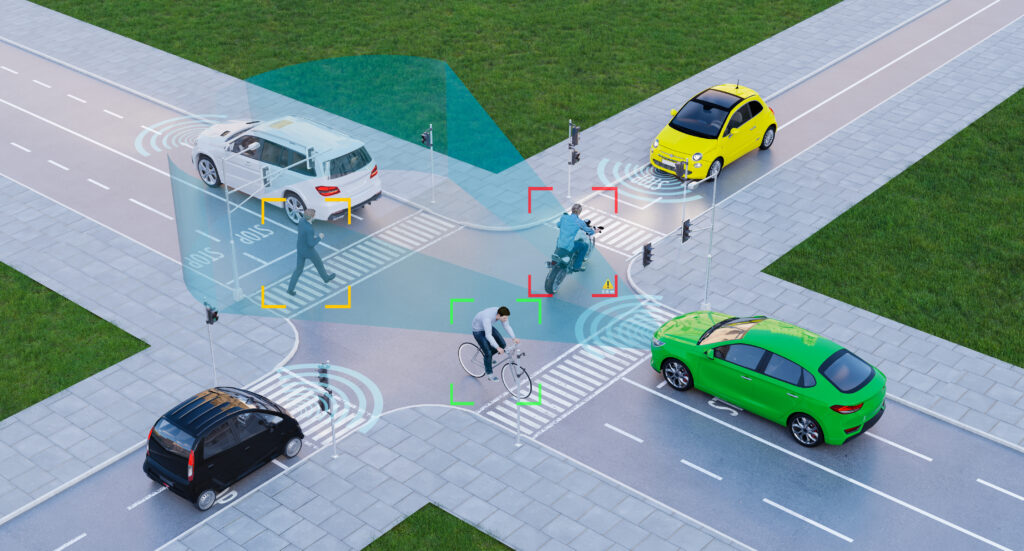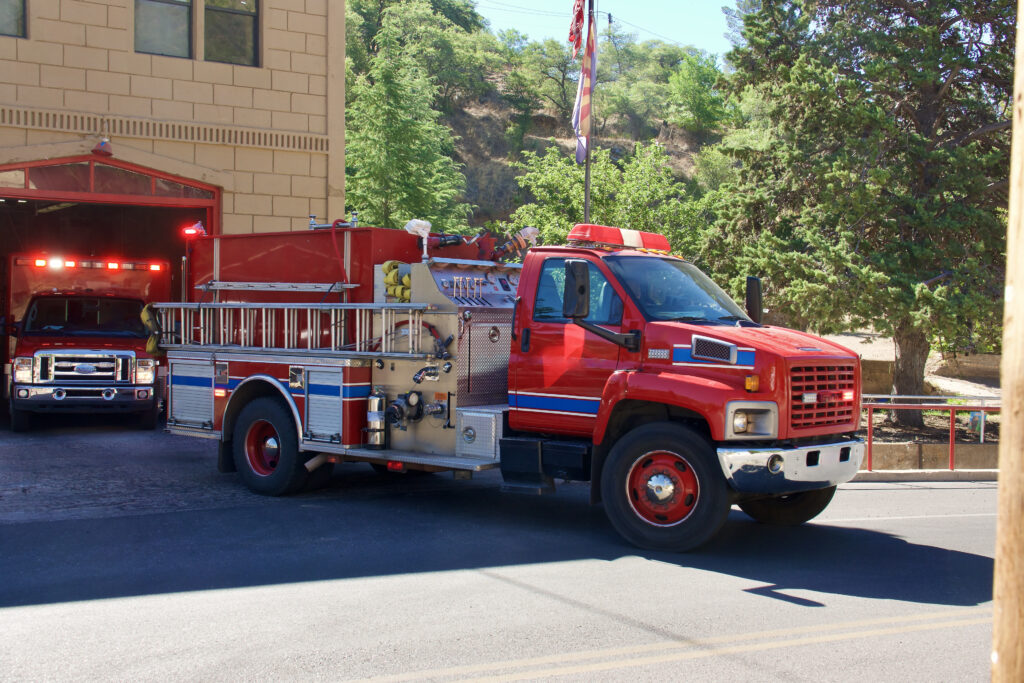
Self-driving taxis have become a hot topic in the automotive industry, sparking debates about their safety compared to human drivers. Recently, Cruise, a self-driving car company, was requested to reduce its robotaxi fleet by 50% in San Francisco after one of its self-driving taxis crashed with an emergency vehicle.
In this article, we’ll explore the world of self-driving taxis, review the levels of automation for self-driving cars, examine accident statistics, and discuss whether driverless taxis are safer than human drivers.
What are Self-Driving Taxis?
Self-driving taxis, also known as autonomous taxis or driverless taxis, are a revolutionary concept in transportation. They are vehicles equipped with advanced sensors, cameras, radar, and artificial intelligence systems that enable them to navigate and operate without a human driver.
These taxis can pick up passengers, drive them to their destinations, and make crucial driving decisions like lane changes, stopping at traffic lights, and avoiding obstacles, all without a human driver. Companies that are spearheading the driverless taxi industry include Waymo One and Cruise. San Francisco is the first city in the world to offer paid rides to members of the public.
Waymo One recently expanded its driverless ride-hailing services in San Francisco 24/7 and is already serving over 10,000 rides each week to the public. Cruise also expanded to offer driverless services across all of San Francisco.
The Growing Industry of Driverless Taxis
The development and deployment of self-driving taxis represent a significant paradigm shift in the transportation industry. Several tech companies and automakers have invested heavily in autonomous vehicle technology, aiming to revolutionize urban mobility. Some prominent self-driving car companies include Waymo, Tesla, and Cruise. As these companies continue to advance their technology and expand their autonomous taxi services, the industry is poised for substantial growth in the coming years.
Levels of Automation for Self-Driving Cars
To understand the safety of self-driving taxis, it’s essential to grasp the levels of automation for self-driving cars, as defined by the Society of Automotive Engineers (SAE). These levels range from no automation (Level 0) to full automation (Level 5), with each level representing a different degree of human involvement and vehicle autonomy.
Here’s a brief overview of each level:
Level 0 – No Automation
In level 0 the vehicle is manually controlled and does not have autonomous capabilities. Therefore, the driver is responsible for all aspects of driving, including acceleration, braking, and steering.
Level 1 – Driver Assistance
The vehicle can assist the driver in specific tasks, such as adaptive cruise control or lane-keeping assistance.
Level 2 – Partial Automation
The vehicle can control both steering and acceleration and deceleration under certain conditions. However, the driver must remain engaged and monitor the environment.
Level 3 – Conditional Automation
The vehicle can handle most driving tasks independently, but the driver must be ready to intervene when needed.
Level 4 – High Automation
The vehicle can operate autonomously in specific conditions or environments, but human intervention may still be required.
Level 5 – Full Automation
The vehicle can perform all driving tasks under all conditions without human intervention.
Do Driverless Taxis Cause Fewer Accidents?

One of the key promises of self-driving taxis is their potential to reduce accidents on the road. To determine whether driverless taxis cause fewer accidents than human drivers, we need to examine driverless taxi accident data and consider various factors that autonomous vehicles may contribute to road safety.
Reduced Human Error – Human error is a leading cause of accidents, often stemming from factors like distractions, impairment, fatigue, or inattention. Self-driving taxis eliminate the risk of human error, which could significantly reduce accident rates.
Consistent and Predictable Behavior – Autonomous vehicles operate based on programmed algorithms and real-time sensor data. They can maintain consistent speed, follow traffic rules, and respond to changes in the environment predictably. This predictability can lead to safer road interactions.
Sensor Technology – Self-driving taxis are equipped with advanced sensor technology, including lidar, radar, and cameras, providing a 360-degree view of their surroundings. These sensors can detect objects and hazards with high precision, helping to avoid accidents.
Adaptive AI – The artificial intelligence systems in autonomous taxis continuously learn and adapt to different driving situations. They can process vast amounts of data and make split-second decisions to avoid collisions, making them potentially safer than human drivers.
Safety Testing and Regulation – Self-driving technology is subject to rigorous testing and safety standards. Developers must demonstrate the safety of their systems before deploying autonomous taxis on public roads.
Challenges and Limitations – It’s important to acknowledge that self-driving technology is not without its challenges and limitations. Inclement weather, complex traffic scenarios, and technical glitches can pose safety risks. Developers are actively addressing these challenges to enhance safety.
Driverless Taxi Collision Statistics
The California Department of Motor Vehicles (DMV) has logged nearly 70 autonomous vehicle collision reports this year. As of August 30, 2023, the DMV received 649 Autonomous Vehicle Collision Reports.
According to Waymo One, in its first million miles of autonomous driving, there were no reported injuries or accidents involving pedestrians or cyclists. However, Waymo reported that there were 2 crashes and 18 minor contact events between Waymo taxis and other motor vehicles. However, according to Waymo, every vehicle-to-vehicle collision involved human drivers who exhibited dangerous behavior or traffic violations. Per Waymo, none of these traffic accidents occurred at intersections, which is where more than 50% of total fatal and injury crashes occur.
According to Cruise, in the first million driverless miles, its autonomous vehicles were involved in 36 collisions, approximately 54% fewer collisions than human drivers in San Francisco. Cruise reported that only one collision in the million miles its driverless vehicles drove resulted in a reported injury. In this particular collision, the other party was assigned responsibility for this accident.
Driverless Cars Obstructing Fire Trucks and Blocking Roads

The San Francisco Fire Chief, Jeanine Nicholson, warned against the expansion of driverless taxis in San Francisco. Multiple recent incidents with driverless cars blocking roads and emergency responders have been reported this year. The California Fire Departments reported that these incidents have included autonomous vehicles blocking one-way streets, emergency vehicles, and fire department driveways.
How Can a Car Accident Lawyer Help After an Auto Accident?
In the event of an auto accident, whether involving a self-driving taxi or a human-driven vehicle, it’s essential to have legal representation to protect your rights and seek compensation for injuries or damages. Our team of experienced personal injury attorneys is dedicated to representing auto accident victims and helping them navigate the legal process.
Here’s how our car accident attorneys can assist you:
Expertise – Our attorneys specialize in personal injury cases, including those involving auto accidents. We have a deep understanding of the legal complexities surrounding these cases.
Thorough Investigation – We conduct thorough investigations to determine liability and gather evidence to support your claim. This includes obtaining accident reports, witness statements, and expert opinions.
Aggressive Negotiation – Our attorneys are skilled negotiators and can work to reach a fair settlement with insurance companies or at-fault parties. We aim to secure maximum compensation for our clients.
Litigation – If a fair settlement cannot be reached through negotiation, our attorneys are prepared to take your case to court. We will advocate for your rights and interests in a courtroom setting.
Compassion – We understand the physical, emotional, and financial toll that auto accidents can have on victims. Our attorneys approach each case with empathy and compassion, providing support throughout the legal process.
Our San Francisco Personal Injury Attorneys Represent Car Accident Victims

The safety of self-driving taxis compared to human drivers is a complex and evolving topic. While autonomous vehicles hold the potential to significantly reduce accidents and improve road safety, challenges, and technical limitations still exist.
If you’ve been involved in an auto accident, whether with a self-driving taxi or autonomous car our team of personal injury attorneys is here to provide the legal advocacy you need to win your . At Golden State Accident Lawyers our auto accident lawyers have recovered millions of dollars in compensation for our clients. Call our San Francisco law firm today to schedule a free consultation.


